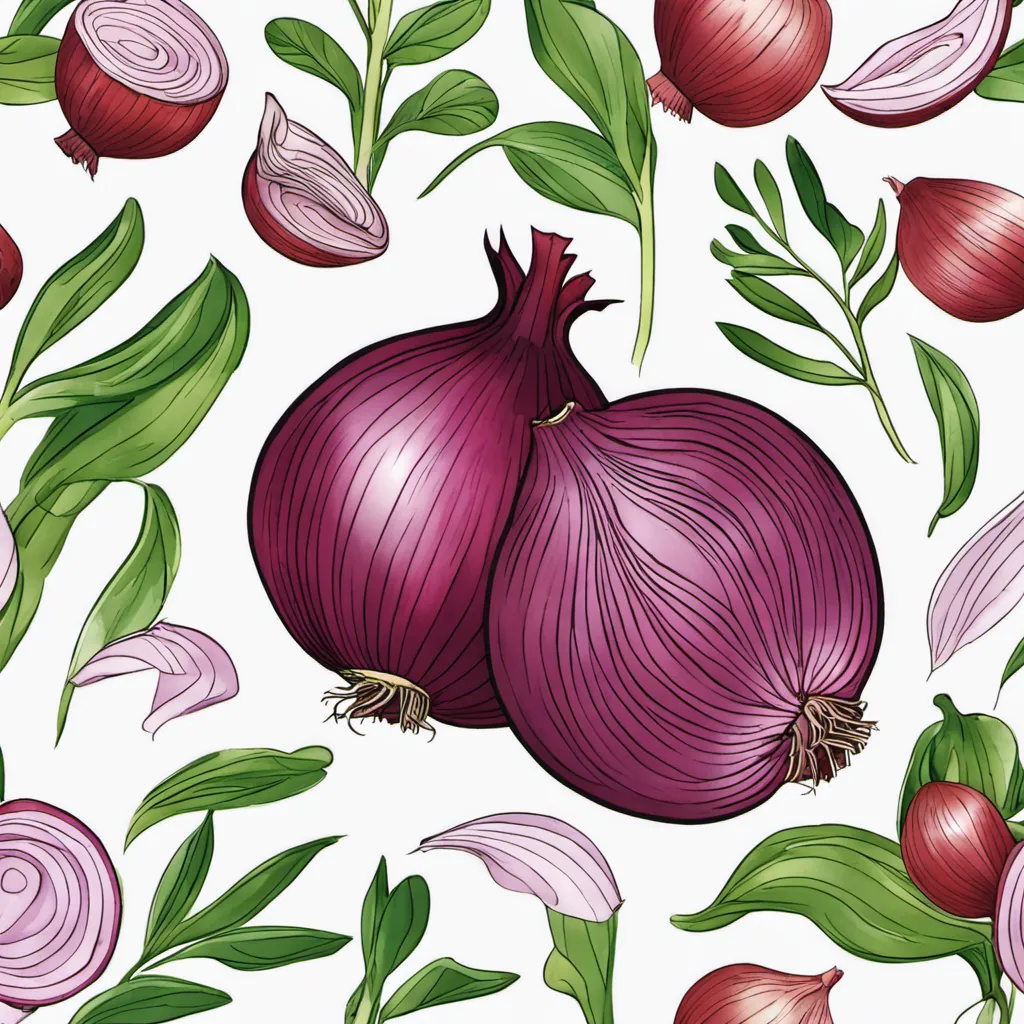Onions are an essential ingredient in cuisines around the world. While you might be familiar with the common red and brown onions, there’s a whole world of onion varieties to explore. Let’s delve deeper into the realm of onions and understand their distinct flavors, uses, and health benefits.
Mild Onions
These onions boast a pyruvate rating of 5 or less, based on the 0-10 scale. Some Chilean and Spanish varieties fall under this category. They are often larger and categorized as Class 1 onions. However, it’s worth noting that not all large Class 1 onions are mild. Sweet onions are a subset of this category, characterized by their paleness and thin skins. The term “sweet” is subjective when referring to these onions.
Cooking Onions
Commonly known as the brown onion, these are the jack-of-all-trades in the kitchen, suitable for a wide range of cooking techniques.
White Onions
Distinguishable by their unique papery skin, white onions need arid climates for growth, making all of them imports. They pack a stronger flavor punch compared to other onions. Due to their high dry matter content, which can be twice that of a regular brown cooking onion, they are a prime choice for dehydration.
Shallots
Often mistaken as an onion variety, shallots belong to the allium family but are a distinct species. Unlike onions, shallots grow in clusters with individual bulbs connected at the base and enclosed in loose skins. Recognizable by their fine-textured, coppery skin and tapered shape, shallots offer a distinct taste profile.
Pickling Onions
These smaller brown onions are the go-to for pickling and are a great addition to stews. Their low water content and pronounced flavor make them ideal for preservation.
Green Onions
Rare in the UK, these onions are typically brown and/or mild varieties harvested prematurely and sold directly from the field. Essentially, they are bulb onions sold before the drying and storage process, similar in nature to salad onions.
Salad Onions
Cultivated specifically for their immature stage, these varieties are grown at high densities and are typically sold with their tops.
Red Onions
Noted for their high anthocyanin content, red onions have a richer antioxidant profile compared to brown onions. This attribute provides added health benefits. The types cultivated possess a red edge on each scale inside the bulb. While they’re increasingly being consumed and are popular in salads, they shouldn’t automatically be assumed to be mild.
Supasweet Onions
Gaining traction for their unique ‘tear-free’ attributes and aptness for raw consumption, supasweet onions are becoming a favorite. Freshly consumed, they delight with a crunchy texture and subtle sweet taste, making them perfect for sandwiches, salads, and salsas. Their potency in cancer-preventing antioxidants is especially significant due to their raw consumption.
When standing in the produce aisle, armed with knowledge, you’ll now appreciate the diversity and richness of the onion family. Whether you’re aiming for a sweet raw bite or a deep caramelized flavor, there’s an onion perfectly suited for your culinary needs.
Read more: Which Onion Is Best For Cooking?
Are Red or Brown Onions Better? A Deep Dive into the World of Onions
Image by Ai Image Generator
Onions are a culinary staple, gracing kitchens worldwide and appearing in countless dishes. They add flavor, depth, and sometimes, a touch of sweetness. But when you’re standing in the produce aisle, you might find yourself torn between red and brown onions. Which one is better? To answer that question, let’s delve into the differences, uses, and health benefits of each.
1. Color and Appearance
- Red Onions: These have a deep purple, almost reddish skin with white and purple-tinted flesh. They’re typically medium to large in size.
- Brown Onions (also known as Yellow Onions): They come with a brown or pale yellow skin, and the flesh is typically a soft yellow color.
2. Flavor Profile
- Red Onions: They tend to be milder and sweeter than brown onions. Some say the taste is almost fruity, and it has a sharp, crisp texture when raw.
- Brown Onions: These are your all-purpose, everyday kind of onions. They have a strong, pungent flavor when raw, but this mellows out and becomes sweeter as they’re cooked.
3. Best Uses
- Red Onions: Their vibrant color makes them a top choice for salads, sandwiches, and other dishes where they remain raw. They’re also often pickled because their sweetness pairs well with vinegars.
- Brown Onions: Due to their robust flavor, brown onions are frequently used in cooking—think soups, stews, sauces, and roasts. They caramelize beautifully, turning rich and sweet.
4. Nutritional Value
Both onion types offer a wealth of nutritional benefits, but there are slight differences:
- Red Onions: They have a higher amount of antioxidants, particularly anthocyanin, which gives them their red/purple hue. Anthocyanins are known for their potential health benefits, including reducing heart disease risk and having anti-inflammatory effects.
- Brown Onions: While they might have fewer antioxidants than their red counterparts, they’re still a rich source of vitamins and minerals, like Vitamin C, B vitamins, and potassium. They also contain quercetin, an antioxidant that might help lower blood pressure.
5. Price and Availability
While prices and availability can vary depending on the region and season:
- Red Onions: These are often a tad pricier than brown onions but are widely available in most grocery stores.
- Brown Onions: Usually cheaper and available in bulk, these are the workhorse of the onion family and are found almost everywhere.
Read more: Onion Nutrition Facts
Disclaimer: Above onion images are generated by aiimagegenerator.com

